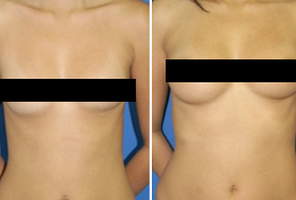Biliopancreatic diversion (BPD) induces a state of malabsorption in the body. While RYGBP bypasses the stomach and first part of the intestines, BPD removes approximately 70% of the stomach. With less stomach present, there is less acid produced to break down food therefore malabsorption is induced. BPD does leave a greater amount of stomach to hold food than RYGBP's pouch. Patients are then able to consume more food and are full less quickly than RYGBP. The smaller stomach has a newly created connection to the intestines called the anastomosis. Although similar to the connection between the pouch and the intestines in RYGBP, BPD has a much smaller distance from the stomach to the colon and promotes more malabsorption.
BPD also diverts fluids and bile produced in the stomach and the first part of the intestines. These fluids are responsible for breaking down fats and nutrients for the body to absorb. The diverted enzymes join the ingested food only in the distal small intestine otherwise known as the ileum. Bile and pancreatic secretions flow through the bypassed Biliopancreatic channel; some are reabsorbed while the rest then join the food at a later point in the alimentary channel. The part where all of the fluids and food mix is called the common channel. Surgeons use a variety of formulas to determine how long each channel should be according too the patient's need's and body. As is the case with all bariatric procedures, weight loss will vary depending on many factors including but not limited to: surgeon, body type, length and quality of medical follow-up, etc.
The result is that the fluids and bile now have less of a chance to break down all of the food. The lack of these fluids does not enable the body to absorb larger fat, protein, and carbohydrate molecules. The problems that arise are the inability to absorb some nutrients, the development of ulcers, and the foul-smelling gas and excrement produced by the undigested fats.
BPD is an effective weight-loss procedure that is less commonly performed than RYGBP. It should be considered only by patients with morbid obesity who are evaluated by surgeons who are trained in the procedure and perform it routinely.

